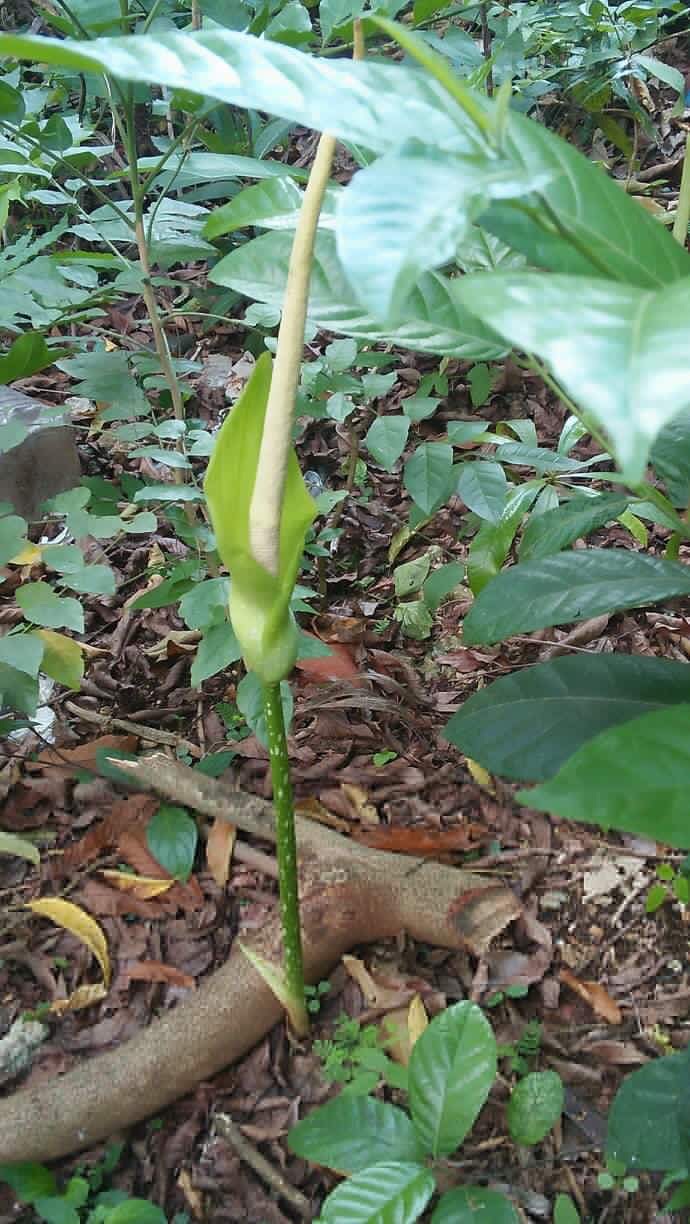Welcome
The following pages contain information, pictures and reports about very special plants.
Amorphophallus
The plants presented on these pages are very rare and special. The first genus of plants presented is Amorphophallus. This genus belongs to the family Araceae. Plants belonging to this plant family are commonly known as aroids. The most famous species in this genus is Amorphophallus titanum which is considered the biggest flower in the world.
Many people call this plant a corpse flower because of the unpleasant smell it produces in order to attract its pollinators. Generally Amorphophallus plants are grown because of their fascinating flowers. Often the single leaf that is grown by these plants shows very attractive markings and patterns and some plants even have red leaves. Today more than 200 Amorphophallus species are known and Trederus-Maximus.com aims to be the most important source of information about as many Amorphophallus species as possible. The information provided is intended to increase popularity of Amorphophallus plants, guide growing and most importantly preserve these wonderful plants which are sadly often threatened in nature due to human activities. In order to read more about these fascinating plants simply have a look at our Amorphophallus section.

Haworthia
The second major group of plants presented belongs to the family Xanthorrhoeaceae. It is a family of small succulent plants from South Africa called Haworthia. Haworthias are very tough and fascinating plants and the reason for growing them is very different compared to Amorphophallus. Haworthia flowers are all the same (or very, very similar), small and most people would consider them as boring. The plants themselves are the main source of joy. Many growers refer to Haworthia plants as living gems and in our opinion that's what they are: Living jewels! Haworthias can occur in a wide range of shapes and colours and the most fascinating fact about them is that they can be combined! Haworthia hybrids and breeding becomes increasingly popular all over the world. Many famous hybrids come from Japan but also hybrids from Taiwan, Europe and other places deserve their appreciation. Trederus-Maximus.com aims to concentrate on cultivated plants which can be considered as living gems. There are many plants within the genus that are not very attractive and basically ignored by breeders. Nevertheless we will provide a list of species that are currently known. It has to be added that this list will need a lot of updates and will possibly also cause some discussion about validity of certain species. There is a lot of discussion going on and we appreciate that there is no species list that will be accepted by everyone. Hence we want to emphasize that this list aims to be a guide for the interested grower rather than taxonomic precision. Species that are common in cultivation will get more attention and we will give an overview about their natural habitat. In many cases we will present cultured plants. In order to learn more follow our Haworthia section and make sure you look at the gallery.
Gasteria
We also have a small section on Gasteria. These succulent plants also originate from South Africa and Haworthia growers often grow at least some of them in between their Haworthia plants. The range of Gasteria plants (species) that can be found in nature is by far not as numerous as in Haworthia. This may be the reason why they are not as popular as Haworthias. We still think that they are very nice plants and and that is why we are trying to motivate growers to further grow and hybridize Gasteria plants. Just have a look at our Gasteria section and find out why it is a good idea to grow some of them.
Other Plants
In our section "Other Plants" we also provide information on a choice of selected plants not belonging to the above groups. This includes some other aroids e.g. Pseudohydrosme gabunensis, Arisaema sp. and a choice of other succulent plants e.g. Cyphostemma, Adenia and Euphorbia. This section does not intend to give a picture on a whole genus. The section aims to select individual species / plants and present them by themselves. Plants included in this section may vary over time.